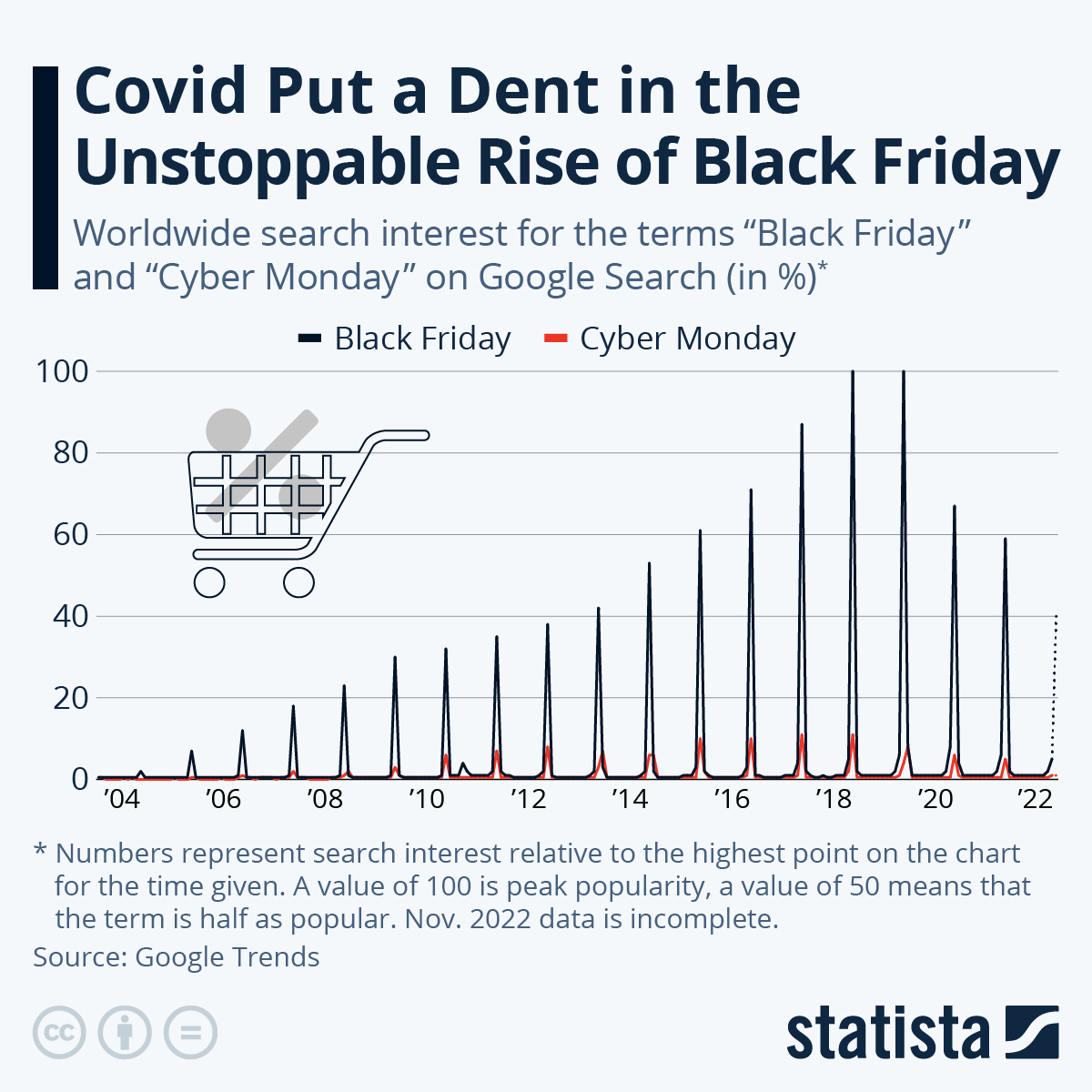The term “Black Friday” is used to refer to the day after
Thanksgiving Day in the United States. It first became widely known in the 1980’s.
This term was originally created by the police as they associated the chaotic atmosphere
especially traffic congestions with the unofficial start of the Christmas
shopping season. Black Friday has regularly been the busiest shopping day of
the year since the early 2000s. This is so because many retailers started
offering exceptional discounts and opening up their stores earlier in the
morning to entertain as many consumers as possible.
No doubt Black Friday is the biggest day of the year for brick-and-mortar retailers in the United States, but the rise in e-commerce business has helped the concept of Black Friday become a global concept over the last decade. Based on Google Search trends, the infographic shows that Black Friday has been getting bigger each passing year in terms of consumer’s attention. This was true until the pandemic hit the world and everything changed. In November 2020, Google search interest for the term "Black Friday" fell more than 30 percent short of the 2019 level and the downward trend continued in 2021, when global search volume dropped to 59 percent of the 2019 peak.
As Black Friday is around the corner, it will be interesting
to see if the searches for Black Friday deals pick up again this year. With
inflation weighing heavily on consumers' minds, it could really go either way.
Cash-strapped holiday shoppers could be especially keen on finding the best
deals, they could just as easily stay away from Black Friday deals altogether,
though.


